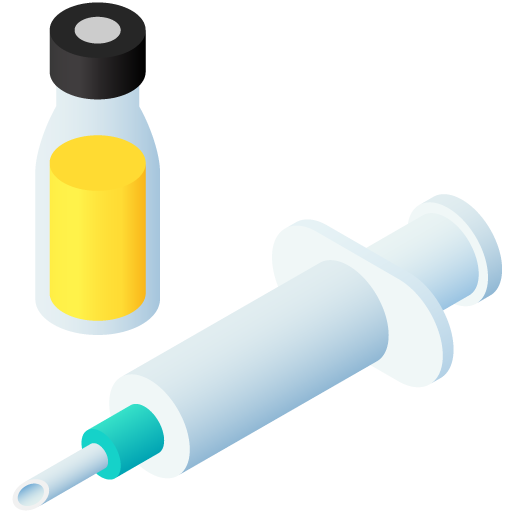Medesedan
Active substance
ATC code
Species
Horses and cattle.
Indications
Sedation and analgesia in horses and cattle during various examinations and treatments, and in situations where handling of animals will be facilitated by administration of the veterinary medicinal product. For premedication before administration of injectable or inhalation anaesthetics.
Dose to be administered and administration route
Intramuscular or intravenous use.
To be administered intramuscularly or by slow intravenous injection of detomidine hydrochloride at a dose of 10 - 80 μg/kg depending on the degree and duration of sedation and analgesia required. The effect is more rapid after intravenous administration. To ensure a correct dosage, body weight should be determined as accurately as possible.
Single use (horses and cattle)
|
Dose |
Effect |
Duration of effect (h) |
Other effects |
|
|
ml/100 kg |
µg/kg |
|||
|
0.1 - 0.2 |
10 - 20 |
Sedation |
0.5 - 1 |
|
|
0.2 - 0.4 |
20 - 40 |
Sedation and analgesia |
0.5 - 1 |
Slight staggering |
|
0.4 - 0.8 |
40 - 80 |
Deeper sedation and better analgesia |
0.5 - 2 |
Staggering, sweating, piloerection, muscular tremors |
The onset of action occurs 2 - 5 min after i.v. injection. The full effect is seen 10 - 15 min after i.v. injection. If necessary, detomidine hydrochloride can be administered up to a total dose of 80 μg/kg.
The following dosing instructions show different possibilities for the combination of detomidine hydrochloride. However, the simultaneous administration with other drugs should always be based on a benefit/risk assessment by the responsible veterinarian and it must be done taking into account the SPC of the relevant products.
Combinations with detomidine to increase sedation or analgesia in a standing horse
Detomidine hydrochloride 10 - 30 µg/kg IV in combination with either
|
• |
butorphanol |
0.025 - 0.05 mg/kg IV |
or |
|
• |
levomethadone |
0.05 - 0.1 mg/kg IV |
or |
|
• |
acepromazine |
0.02 - 0.05 mg/kg IV |
Combinations with detomidine to increase sedation or analgesia in cattle
Detomidine hydrochloride 10 - 30 μg/kg IV in combination with
• butorphanol 0.05 mg/kg IV
Combinations with detomidine for preanaesthetic sedation in the horse
The following anaesthetics can be used after detomidine hydrochloride premedication (10- 20 µg/kg) to achieve lateral recumbency and general anaesthesia:
• ketamine 2.2 mg/kg IV or
• thiopental 3 - 6 mg/kg IV or
• guaifenesin IV (to effect) followed by ketamine 2.2 mg/kg IV
Administer the veterinary medicinal products prior to ketamine and allow sufficient time for sedation to develop (5 minutes). Ketamine and the veterinary medicinal product must therefore never be administered simultaneously in the same syringe.
Combinations with detomidine and inhalation anaesthetics in the horse
Detomidine hydrochloride can be used as sedative premedicant (10 - 30 μg/kg) before induction and maintenance of inhalation anaesthesia. Inhalation anaesthetic is given to effect. The amount of inhalation anaesthetics required is significantly reduced by premedication with detomidine.
Combination with detomidine to maintain injection anaesthesia (total intravenous anaesthesia TIVA) in the horse
Detomidine can be used in combination with ketamine and guaifenesin for maintaining total intravenous anaesthesia (TIVA).
The best-documented solution contains guaifenesin 50 - 100 mg/ml, detomidine hydrochloride 20 μg/ml and ketamine 2 mg/ml. 1 g ketamine and 10 mg detomidine hydrochloride are added to 500 ml of 5 - 10 % guaifenesin; anaesthesia is maintained by an infusion of 1 ml/kg/h.
Combinations with detomidine for induction and maintenance of general anaesthesia in cattle
Detomidine hydrochloride 20 μg/kg (0.2 ml/100 kg) with
• ketamine 0.5 - 1 mg/kg IV, IM or
• thiopental 6 - 10 mg/kg IV
The effect of detomidine-ketamine lasts for 20 - 30 minutes, and the effect of detomidine- thiopental for 10 - 20 minutes.
Adverse reactions
Cattle
|
Very common (> 1 animal / 10 animals treated): |
Bradycardia, Hypertension (transient), Hypotension (transient) Hyperglycaemia Urination1 Penile prolapse (transient)2 |
|
Common (1 to 10 animals / 100 animals treated): |
Ruminal tympany3, Hypersalivation (transient) Ataxia, Muscle tremor Uterine contraction Nasal discharge4, Respiratory depression (slight)5 Hyperthermia, Hypothermia |
|
Rare (1 to 10 animals / 10,000 animals treated): |
Arrhythmia6 Increased sweating (transient) |
|
Very rare (< 1 animal / 10,000 animals treated, including isolated reports): |
Excitation Heart block7 Hyperventilation (slight)8 |
1 A diuretic effect may be observed 45 to 60 minutes after treatment.
2 A partial, penis prolapse can occur.
3 Substances of this class inhibit ruminal and intestinal motility. Can cause a mild bloat in cattle.
4 Mucus discharge from the nose may be seen because of continued lowering of the head during sedation.
5, 8 Causes changes in the respiratory rate.
6, 7 Causes changes in the conductivity of cardiac muscle as evidenced by partial atrioventricular and sinoatrial blocks.
Horses
|
Very common (> 1 animal / 10 animals treated): |
Arrhythmia1, Bradycardia, Heart block2, Hypertension (transient), Hypotension (transient) Hyperglycaemia Ataxia, Muscle tremor Urination3 Penile prolapse (transient)4, Uterine contraction Increased sweating (transient), Piloerection Hyperthermia, Hypothermia |
|
Common (1 to 10 animals / 100 animals treated): |
Hypersalivation (transient) Nasal discharge5 Skin swelling6 |
|
Rare (1 to 10 animals / 10,000 animals treated): |
Colic7 Urticaria Hyperventilation, Respiratory depression |
|
Very rare (< 1 animal / 10,000 animals treated, including isolated reports): |
Excitation Hypersensitivity reaction |
1, 2 Causes changes in the conductivity of cardiac muscle as evidenced by partial atrioventricular and sinoatrial blocks.
3 A diuretic effect may be observed 45 to 60 minutes after treatment.
4 A partial penis prolapse can occur in stallions and geldings.
5, 6 Mucus discharges from the nose and oedema of the head and face may be seen because of continued lowering of the head during sedation.
7 Substances of this class inhibit intestinal motility.
Mild adverse reactions have reportedly resolved uneventfully without treatment. Adverse reactions should be treated symptomatically.
Reporting adverse events is important. It allows continuous safety monitoring of a veterinary medicinal product. Reports should be sent, preferably via a veterinarian, to either the marketing authorisation holder or its local representative or the national competent authority via the national reporting system. See the package leaflet for respective contact details.
Dispensing
POM-V1. NAME OF THE VETERINARY MEDICINAL PRODUCT
Medesedan 10 mg/ml, Solution for Injection for Horses and Cattle
2. QUALITATIVE AND QUANTITATIVE COMPOSITION
1 ml solution for injection contains: Active substance:
|
Detomidine hydrochloride (equivalent to 8.36 mg detomidine) Excipients: |
10.0 mg |
|
Methyl parahydroxybenzoate (E 218) |
1.0 mg |
For a full list of excipients, see section 6.1.
3. PHARMACEUTICAL FORM
Solution for injection.
Clear and colourless solution.
4. CLINICAL PARTICULARS
4.1 Target species
Horse, cattle.
4.2 Indications for use, specifying the target species
For the sedation and slight analgesia of horses and cattle, to facilitate physical examinations and treatments, such as minor surgical interventions.
Detomidine can be used for:
• Examinations (e.g. endoscopy, rectal and gynaecological examinations, X-rays).
• Minor surgical procedures (e.g. treatment of wounds, dental treatment, tendon treatment, excision of skin tumours, teat treatment).
• Before treatment and medication (e.g. stomach tube, horse shoeing).
For premedication prior to administration of injection- or inhalation anaesthetics.
See section 4.5 before use.
4.3 Contraindications
Do not use in animals with cardiac abnormalities or respiratory diseases.
Do not use in animals with liver insufficiency or renal failure.
Do not use in animals with general health problems (e.g. dehydrated animals).
Do not use in combination with butorphanol in horses suffering from colic.
Do not use in the last trimester of pregnancy. See also section 4.7. and 4.8.
4.4 Special warnings for each target species
None.
4.5 Special precautions for use
Special precautions for use in animals
As sedation begins, especially horses may start to sway and lower the head rapidly while they remain standing. Cattle and especially young cattle will try to lie down. To prevent injuries the location should therefore be chosen carefully. Especially for horses usual precautionary measures should be taken to prevent self-injury. To avoid ruminal bloat and aspiration of feed or saliva, cattle should be mantained in sternal recumbency during and followig treatment and head and neck of recumbent cattle should be lowered.
Animals suffering from shock or liver or kidney disease should only be treated according to the benefit risk assessment by the responsible veterinarian. The product should not be used in animals suffering from cardiac diseases (with preexisting bradycardia and risk of atrioventricular block), respiratory-, liver- or renal insufficiencies, shock or any other extraordinary stress conditions.
Detomidine/butorphanol combination should not be used in horses with a history of liver disease or cardiac irregularities.
It is recommended that feed should be withheld for at least 12 hours prior to anaesthesia.
Water or food should not be offered to treated animals until the drug effect has passed.
In painful procedures detomidine should be used only in combination with an analgesic or a local anaesthetic.
While waiting for sedation animals should remain in calm surroundings.
In case of sustained effect it is necessary to protect the animals from heat or cold.
Special precautions to be taken by the person administering the veterinary medicinal product to animals
In the case of accidental oral intake or self-injection, seek medical advice immediately and show the package leaflet or the label to the physician. DO NOT DRIVE as sedation and changes in blood pressure may occur.
Avoid skin, eye or mucosal contact.
Wash the exposed skin immediately after exposure with large amounts of water.
Remove contaminated clothes that are in direct contact with skin.
In case of accidental contact of the product with eyes, rinse abundantly with fresh water. If symptoms occur, seek the advice of a physician.
If pregnant women handle the product, special caution should be observed not to self-inject as uterine contractions and decreased foetal blood pressure may occur after accidental systemic exposure.
ADVICE TO DOCTORS:
Detomidine is an alpha2-adrenoreceptor agonist, symptoms after absorption may involve clinical effects including dose-dependent sedation, respiratory depression, bradycardia, hypotension, a dry mouth, and hyperglycaemia. Ventricular arrhythmias have also been reported.
Respiratory and haemodynamic symptoms should be treated symptomatically.
4.6 Adverse reactions (frequency and seriousness)
Injection of detomidine may cause the following side effects:
• Bradycardia
• Transient hypo- and/or hypertension.
• Respiratory depression, rarely hyperventilation,
• Increase in blood glucose
• As with other sedatives, in rare cases paradoxical reactions (excitations) can develop.
• Ataxia
• Uterine contractions
• In horses: Cardiac arrhythmia, atrioventricular and sino-atrial block • In cattle: Inhibition of rumen motility, tympania, paralysis of the tongue.
At doses above 40 µg/kg bodyweight, the following symptoms can also be observed: sweating, pilo-erection and tremor of muscles, transient penis prolaps in stallions and geldings and mild, transient tympania of rumen and increased salivation in cattle.
In very rare cases horses may show mild symptoms of colic following administration of alpha-2 sympathomimetics because substances of this class transiently inhibit the motility of the intestines. Detomidine should be prescribed with caution in horses which present with signs of colic or impaction.
A diuretic effect is usually observed within 45 to 60 minutes after treatment.
4.7 Use during pregnancy, lactation or lay
Do not use during the last trimester of pregnancy. Use only according to the benefit/risk assessment by the responsible veterinarian during the other months of pregnancy.
4.8 Interaction with other medicinal products and other forms of interaction
Concurrent use of other sedatives only after consultation of the warnings and precautions of the product concerned.
Detomidine should not be used in combination with sympathomimetic amines such as adrenaline, dobutamine and ephedrine.
The concurrent use of certain potentiated sulphonamides may cause cardiac arrhythmia with fatal outcome. Do not use in combination with sulphonamides. Detomidine in combination with other sedatives and anaesthetics should be used carefully because additive/synergistic effects may be possible. Where anaesthesia is induced with a combination of detomidine and ketamine, prior to maintenance with halothane, the effects of halothane may be delayed and care must be taken to avoid overdosage. When detomidine is used as a premedicant prior to general anaesthesia, the product may delay the onset of induction.
4.9 Amounts to be administered and administration route
For intravenous (IV) or intramuscular (IM) use. The product should be injected slowly. Onset of effect is more rapid following intravenous use.
|
Dosage in mcg/kg |
Dosage in ml/100 kg |
Level of sedation |
Commencement of effect (min) |
Duration of effect (hrs) |
|
|
|
|
|
horse |
cattle |
|
|
10-20 |
0.1-0.2 |
Light |
3-5 |
5-8 |
0.5-1 |
|
20-40 |
0.2-0.4 |
Moderate |
3-5 |
5-8 |
0.5-1 |
When prolonged sedation and analgesia is required, doses of 40 to 80 µg/kg can be used. The duration of effect is up to 3 hours.
For combination with other product to intensify the sedation or for premedication prior to general anaesthesia, doses of 10 to 30 µg/kg can be used.
It is recommended to wait 15 minutes after the detomidine administration before starting the planned procedure.
The bodyweight of the animal to be treated should be determined as accurately as possible to avoid overdosing.
4.10 Overdose (symptoms, emergency procedures, antidotes), if necessary
In the event of an accidental overdose, cardiac arrhythmias, hypotension, delayed recovery and profound CNS and respiratory depression may occur.
Should the effects of detomidine become life-threatening, general measures for circulatory and respiratory stabilisation and administration of an alpha2-adrenergic antagonist are recommended.
4.11 Withdrawal period(s)
Horse, cattle:
|
Meat and offal: |
2 days |
|
Milk: |
12 hours |
5. PHARMACOLOGICAL PROPERTIES
Pharmacotherapeutic group: Sedative and analgesic
ATCvet code: QN05CM90
5.1 Pharmacodynamic properties
The active ingredient of the product is 4-(2,3-dimethylbenzyl)-imidazole-hydrochloride (INN: Detomidine). Detomidine leads to sedation of the treated animals and relieves pain. Duration and intensity of the effects are dose related. Mode of action of Detomidine is a pronounced stimulation of alpha-2 adrenoceptors. Its analgesic effects are due to an inhibition of transmission of the pain impulse within the CNS.
Detomidine also reveals its effects on peripheral alpha-receptors, therefore increase in blood glucose levels and at higher dosages piloerection, sweating and diuresis may occur. Following an initial increase in mean blood pressure, it will return to normal or slightly below normal, and heart frequency will decrease. The ECG shows an enlarged PR-interval, and in the horse mild atrio-ventricular blocks may be seen. The above mentioned changes are transient. A respiratory response includes an initial decrease of respiration rate and is increasing to normal or slightly increased values within a few minutes.
5.2 Pharmacokinetic particulars
Detomidine is absorbed rapidly after intramuscular injection. Tmax is 15 – 30 min. Bioavailability after intramuscular administration is 66-85%. After rapid distribution of detomidine into the tissues, it is metabolized nearly completely mainly in the liver, t½ is 1 to 2 hours. Metabolites are mainly excreted via urine and faeces.
6. PHARMACEUTICAL PARTICULARS
6.1 List of excipients
Methyl parahydroxybenzoate (E 218)
Sodium chloride
Hydrochloric acid (for pH-adjustment)
Sodium hydroxide (for pH-adjustment)
Water for injection
6.2 Incompatibilities
In the absence of incompatibility studies, this veterinary medicinal product must not be mixed with other veterinary medicinal products in the same syringe.
6.3 Shelf life
Shelf-life of the veterinary medicinal product as packaged for sale: 3 years Shelf-life after first opening the immediate packaging: 28 days.
Discharge any product remaining in the container at this time.
6.4. Special precautions for storage
This veterinary medicinal product does not require any special storage conditions.
6.5 Nature and composition of immediate packaging
Clear glass (type I) vials closed with a coated rubber stopper (typ I) and an aluminium cap with a polypropylene lid.
1 x 1 glass vial with 5 ml.
5 x 1 glass vials with 5 ml.
1 x 1 glass vial with 20 ml.
5 x 1 glass vials with 20 ml.
Not all pack sizes may be marketed.
6.6 Special precautions for the disposal of unused veterinary medicinal product or waste materials derived from the use of such products
Any unused veterinary medicinal product or waste materials derived from such veterinary medicinal products should be disposed of in accordance with local requirements.
7. MARKETING AUTHORISATION HOLDER
CP-Pharma Handelsgesellschaft mbH
Ostlandring 13
31303 Burgdorf Germany
8. MARKETING AUTHORISATION NUMBER
Vm 20916/4002
9. DATE OF RENEWAL OF THE AUTHORISATION
21 March 2010
10 DATE OF REVISION OF THE TEXT
January 2011
PROHIBITION OF SALE, SUPPLY AND/OR USE
Not applicable.

| Art. Nr. | 20916/4002 |
|---|
 TRUSTED SOURCE
TRUSTED SOURCE








